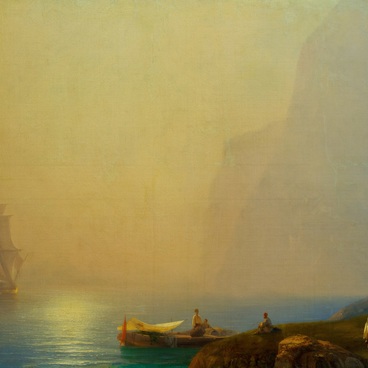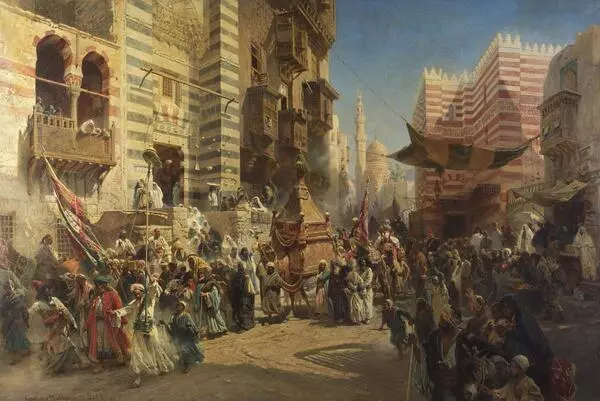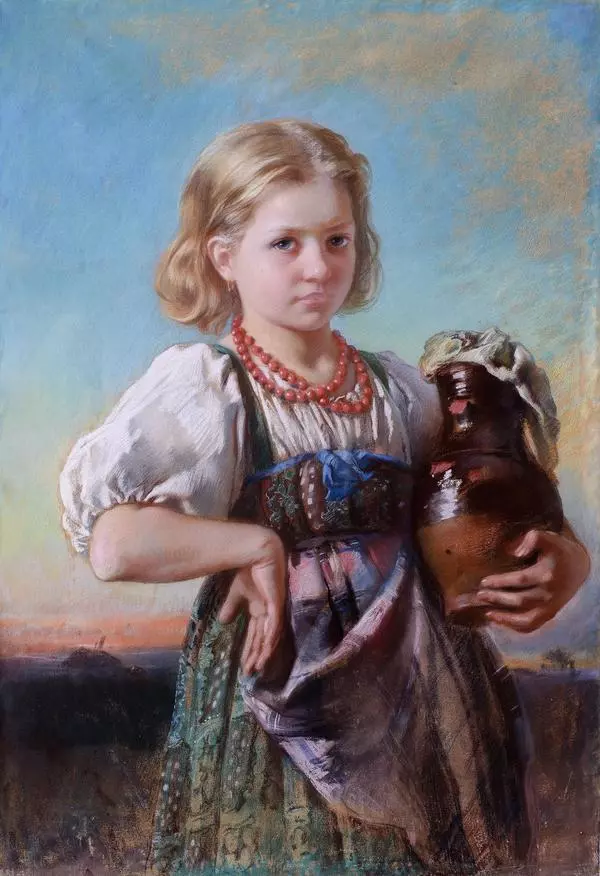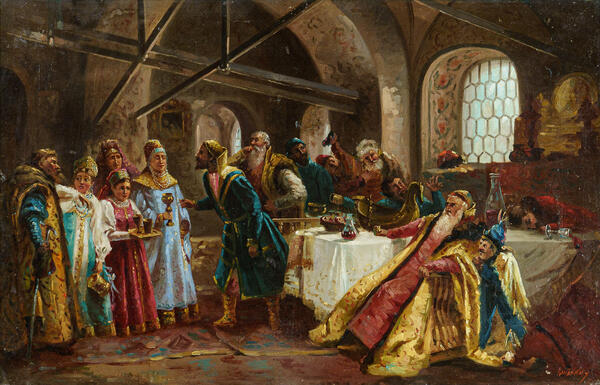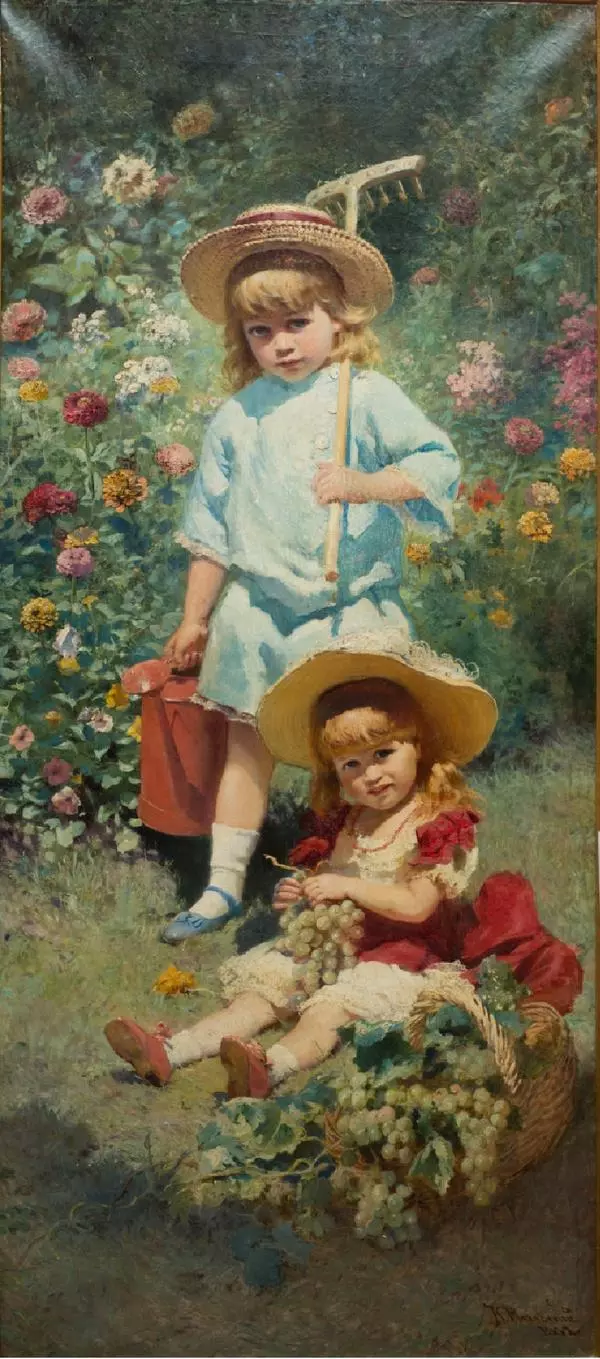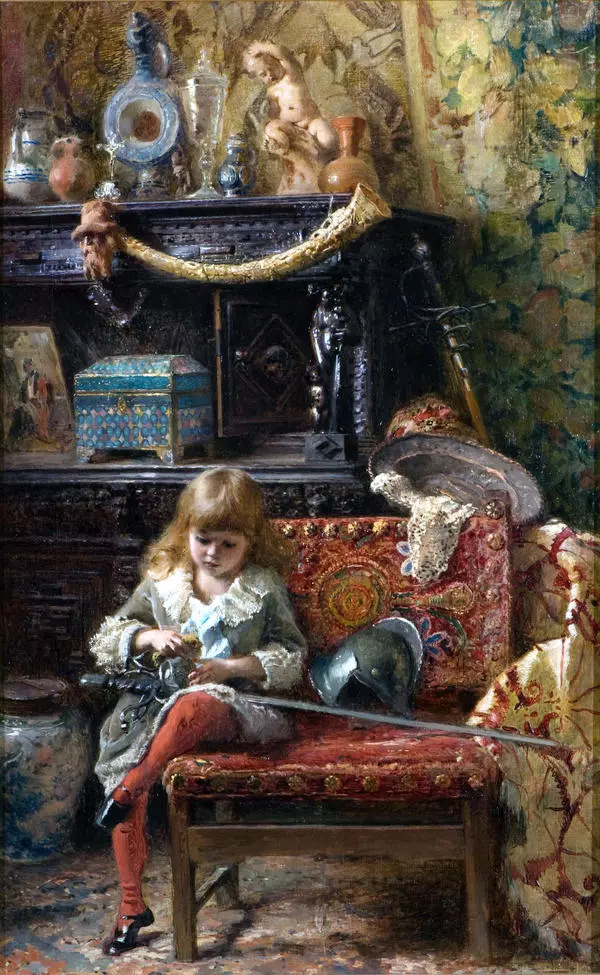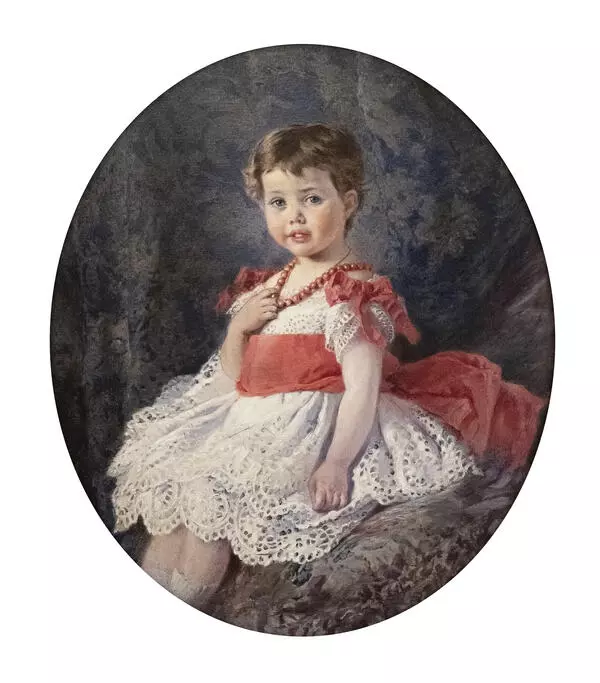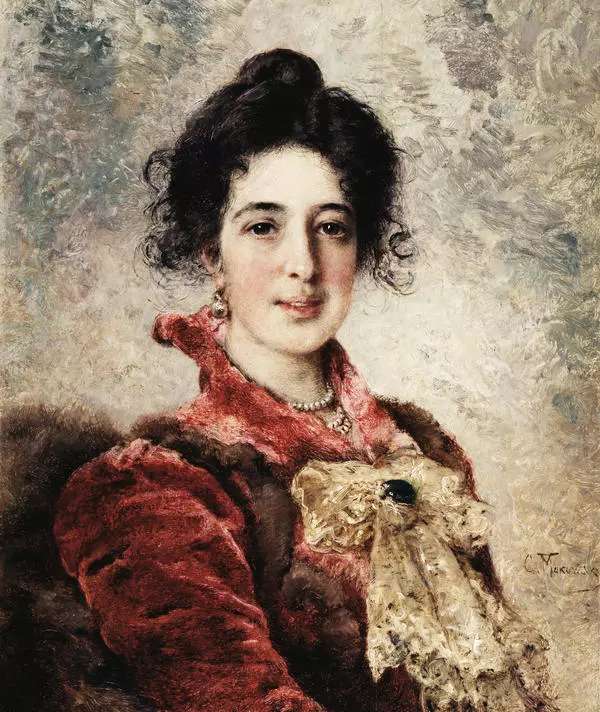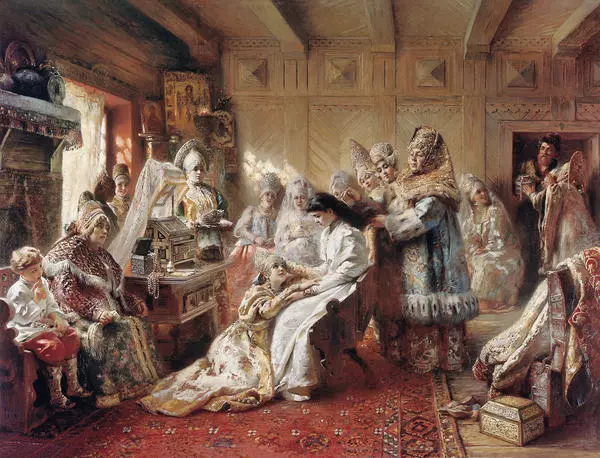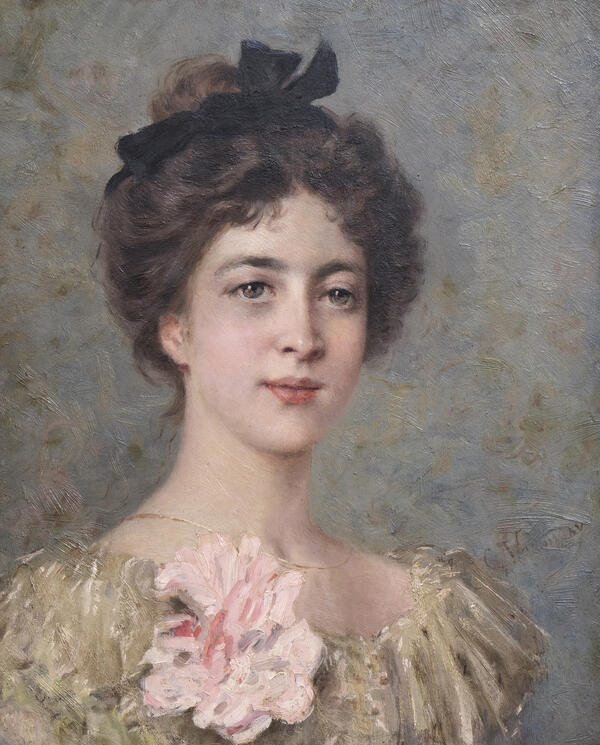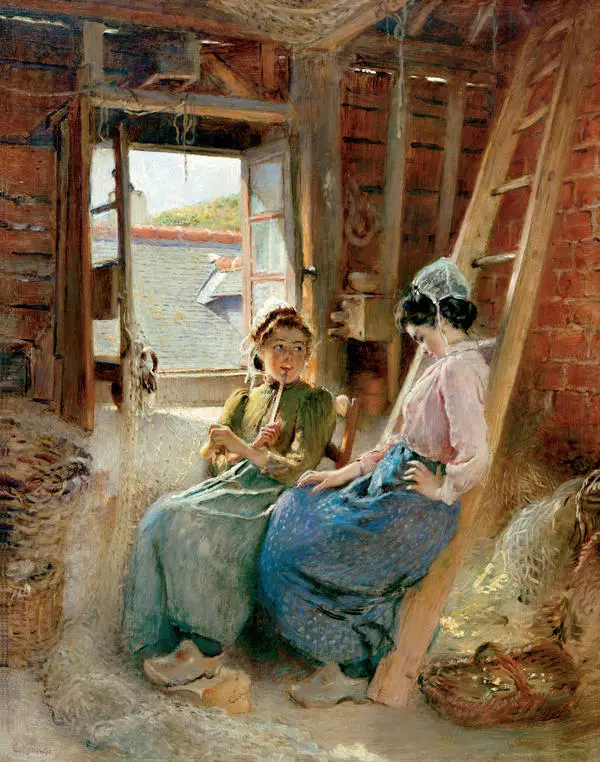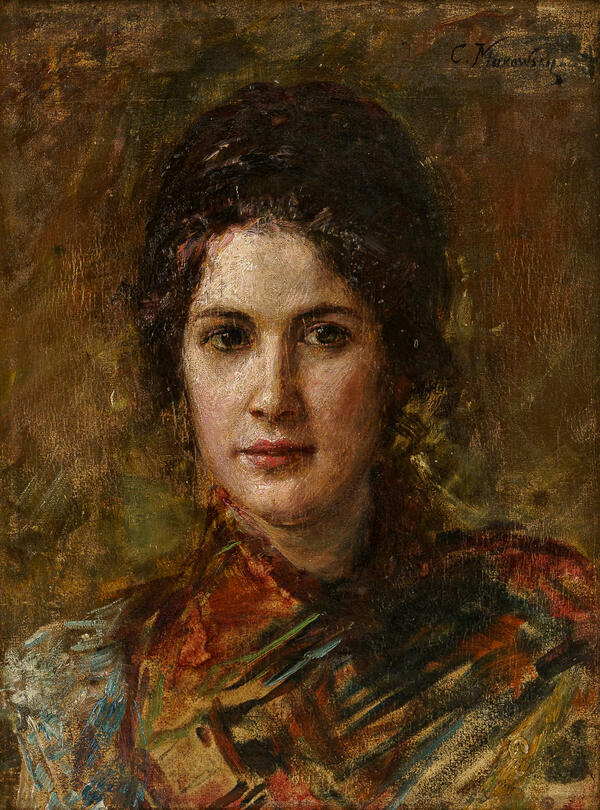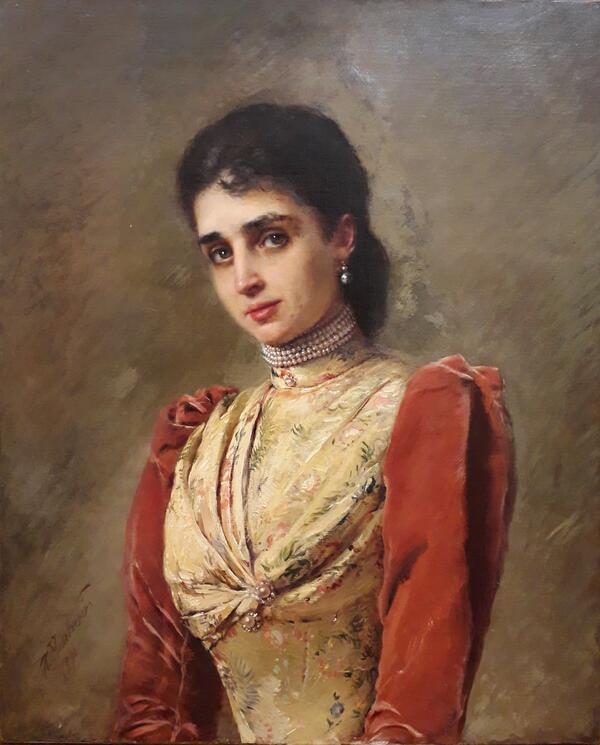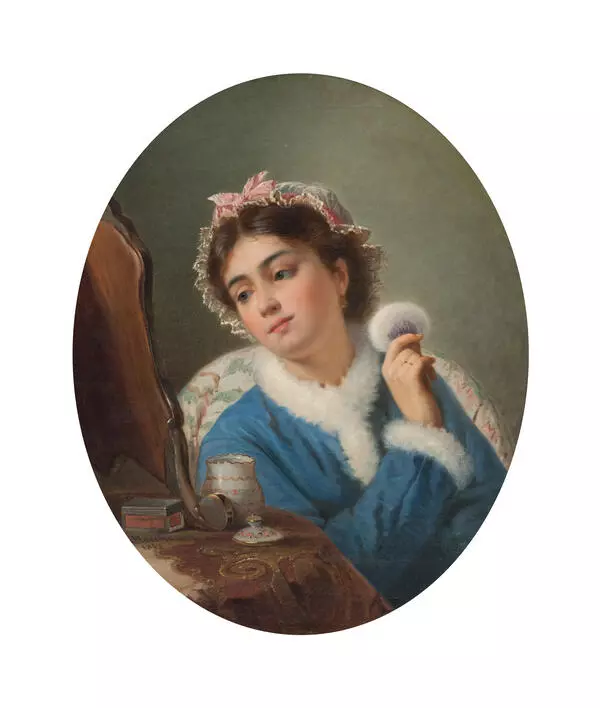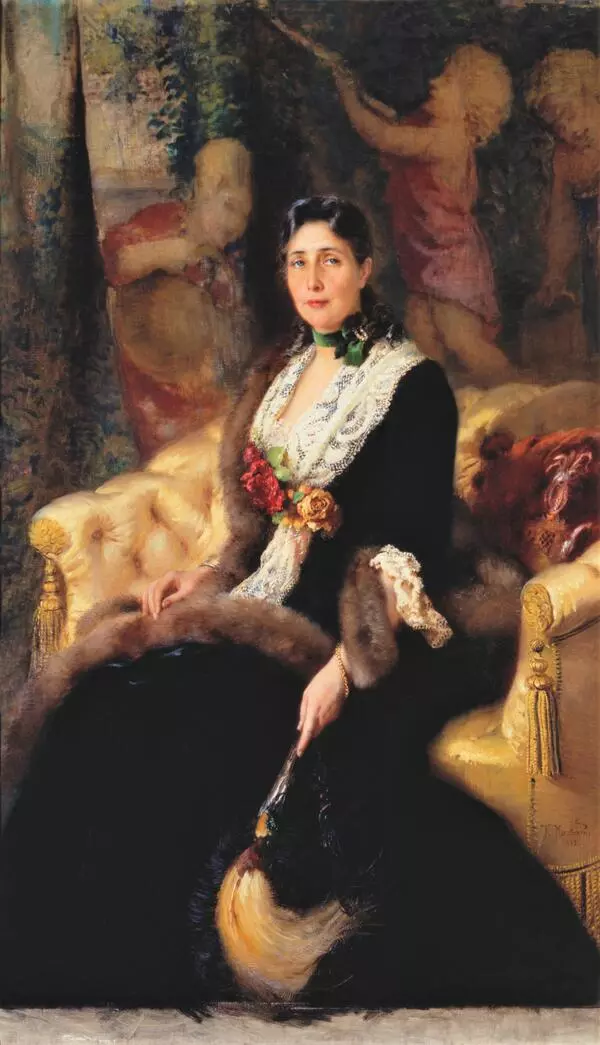The 1870–1880s were the highest point in Makovsky’s artistic career, the time of his greatest fame, when the entire St. Petersburg nobility was literally lining up to order a portrait from the artist.
This portrait shows Yekaterina Pavlovna Letkova, a sister of the artist’s wife, Yulia Pavlovna. A graduate of the Guerrier Higher Course for Women in1879, the same year as the portrait, and proud to be a kursistka, Yekaterina devoted all her life to the “women”s issue”, i.e. the education and emancipation of Russian women. She was acquainted with many outstanding people of her time, socializing in her sister’s drawing room with many a famous painter and musician, such as Ilya Repin, Modest Mussorgsky and other Mighty Five composers. Working for the literary journals Otechestvennye Zapiski and Russkoye bogatstvo, she, too, tried her hand at writing and authored a few short novels and short stories.
Konstantin Yegorovich Makovsky was a Russian artist, one of the members of the Rebellion of 14, who cooperated briefly with the peredvizhniki movement. He also painted in the academic and modern styles, and many of his works show elements of the Baroque art. Makovsky came from a family of painters. There were five children, Konstantin was the eldest. Vladimir and Nikolay also became artists, and one of the two daughters chose art too; the other became a singer. He attended the Moscow School of Art, Sculpture and Architecture, where one of the founders was his father, followed by the Imperial Academy of Art; he was member of the famous Artel of Artists headed by Kramskoy in St. Petersburg. Later Makovsky became a co-founder of the Partnership of the Itinerary Exhibitions of Art (peredvizhniki). Still later, from the mid-1870s on, he took up academic painting, and having broken with the peredvizhniki in 1883, he produced mostly glamorous portraits and historic scenes genre paintings. Makovsky was the most expensive painter of his time in Russia.
Makovsky’s art includes distinct pieces in the boyar style depicting a rich, sparkly, idealistic life of the olden times. The idealistic treatment also distinguishes his portraits, particularly those of children, and even paintings from the peredvizhniki period.



